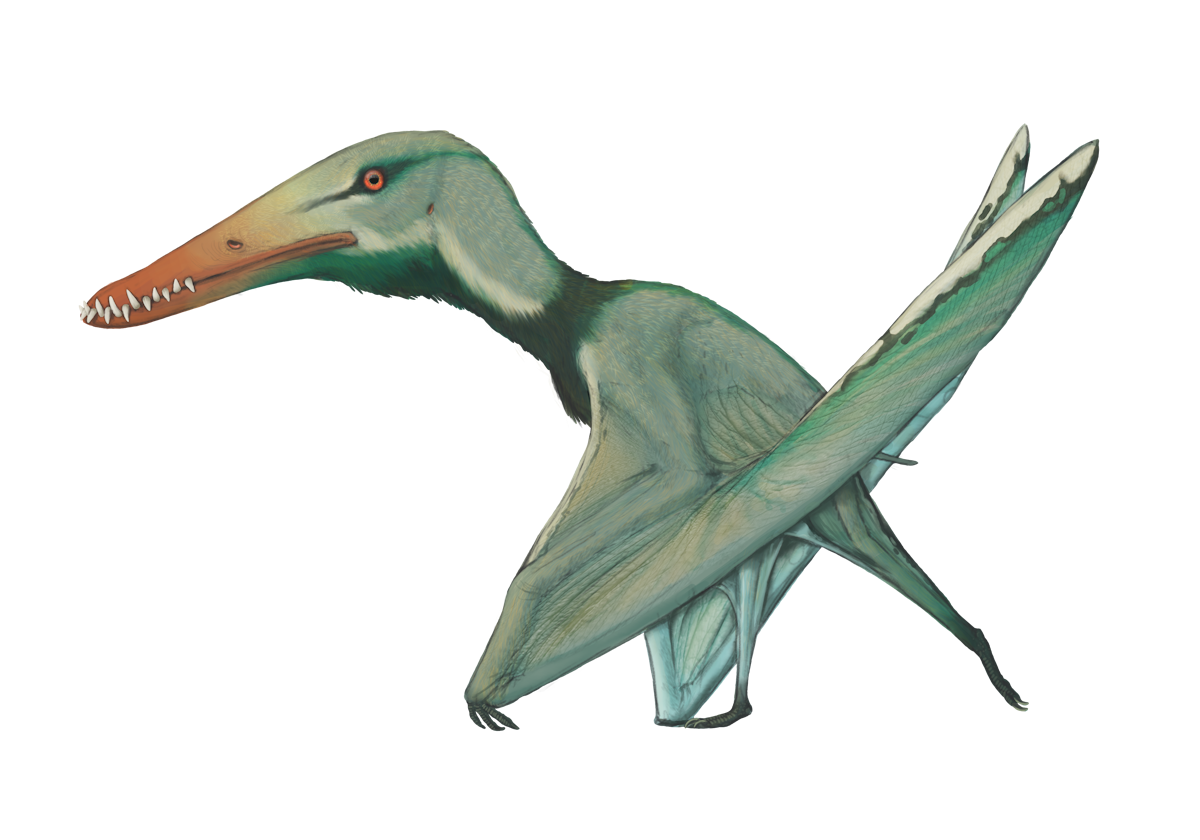Haopterus



First named in 2001, Haopterus is from the Lower Cretaceous Yixian Formation exposed in Liaoning, northeastern China. Haopterus is known from a single well-preserved, but incomplete specimen and lived about 125 million years ago.
The skull is well preserved, although partially obscured by other bones from the specimen. It measures just 14.5 cm (6 inches), and forms a long, low triangle in profile. Unlike many pterosaurs, there is no sign of any bony crest anywhere on the skull or mandible. The teeth are conical and slightly recurved, and are present in the distal two-thirds of the upper and lower jaws. They are widely spaced, and the upper and lower teeth appear to interfinger when the mouth was closed.
The rest of the skeleton is known from neck and torso vertebrae, ribs, a partial left shoulder, and most of both wings except for the distal ends of both wing fingers. After death, but before burial, the skeleton was disturbed and partially disarticulated. The wings and shoulders appear to have drifted away from the torso, and the left wing finger ended up in its own jaws. Its wingspan was 135 cm (4.5 feet), and based on features of the skeleton, the specimen was estimated to be an adult.
Haopterus lived in a temperate forested environment dominated by ginkgoes and conifers with many rivers and lakes. Its teeth suggest that it ate fish, possibly plucking them from the water while flying. It may also have preyed upon small terrestrial animals like lizards, mammals, and insects.
When it was originally described, it was assigned to the pterodactylids, a family whose only member is the Upper Jurassic German genus Pterodactylus, the first pterosaur scientifically named. Subsequent research has shown that this is in error, and that Haopterus lies elsewhere on the family tree of pterosaurs, although there is little agreement as to where. Unwin 2003 found Haopterus to be an istiodactylid, a small family of long-snouted fish eating pterosaurs. Lü and Ji 2006 found that it was an ornithocheiroid, outside of the lineage including istiodactylids, anhanguerids, and ornithocheirids; all powerful fishers, many of which made a living soaring over the open ocean. Andres and Myers in 2013 found that Haopterus is not closely related to any known pterosaurs, and just outside a giant lineage made up of ornithocherioids and azhdarchoids.
1.35 m (4.5 feet)



